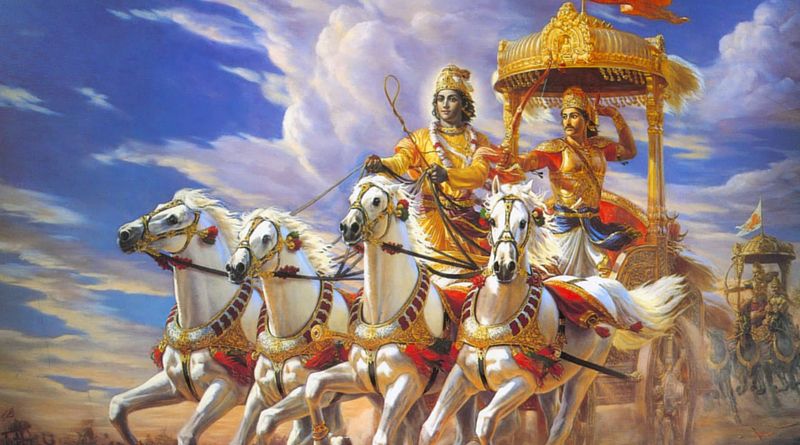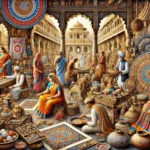The Mahabharata is one of the two major Sanskrit epics of ancient Indian literature, the other being the Ramayana. It holds immense significance in Indian culture and history due to its complex narrative, deep philosophical insights, and its impact on various aspects of life, including religion, morality, and social conduct. Here’s a detailed overview:
Overview and Structure
- Composition: The sage Vyasa traditionally authored the Mahabharata. The epic contains over 100,000 shlokas (verses) and divides into 18 Parvas (books or sections), making it one of the longest epic poems in the world.
- Content: The epic narrates the story of the Kurukshetra War, a great battle between two branches of a royal family, the Pandavas and the Kauravas. It covers various sub-plots and contains philosophical and devotional material, including the Bhagavad Gita, a sacred text of Hindu philosophy.
Main Characters
- Pandeva’s: The five Pandeva brothers—Yudhishthira, Bhima, Arjuna, Nakul, and Sahadev—are the protagonists. They are the sons of King Pandu and his wives, Kunti and Madri.
- Kauravas: The hundred Kaurava brothers, led by the eldest, Duryodhana, are the antagonists. They are the sons of King Dhritarashtra and Queen Gandhari.
- Krishna: A central figure in the epic, Krishna serves as the charioteer and advisor to Arjuna. He is also revered as an incarnation of the god Vishnu.
- Draupadi: The common wife of the Pandavas, Draupadi plays a pivotal role in the narrative, particularly in the events leading to the war.
Key Events
- The Dice Game: Duryodhana invites Yudhishthira to a rigged game of dice, resulting in the Pandavas losing their kingdom and going into exile for 13 years.
- Exile and Return: The Pandavas spend 12 years in the forest and one year in disguise. After their exile, they return to claim their kingdom, leading to the conflict with the Kauravas.
- The Kurukshetra War: The epic climaxes in the Kurukshetra War, a devastating battle that lasts for 18 days, resulting in the near-annihilation of both the Pandavas and Kauravas.
- The Bhagavad Gita: Before the war begins, Arjuna hesitates to fight, leading to a philosophical discourse from Krishna, which forms the Bhagavad Gita. This text addresses the concepts of duty, righteousness, and the nature of reality.
- Angkor Wat – The Largest Hindu-Buddhist Temple in the World

- UNESCO World Heritage Sites

- Indian Handicrafts: A Diverse Cultural Heritage

Themes and Philosophical Insights
- Dharma (Duty/Righteousness): The Mahabharata explores the complexities of dharma and the moral dilemmas faced by its characters. It suggests that dharma is situational and multifaceted.
- Karma (Action and Consequence): The epic emphasizes the law of karma, where every action has consequences, and one must perform their duties without attachment to the results.
- Moksha (Liberation): It discusses the pursuit of moksha, the ultimate goal of life, which is liberation from the cycle of birth and death.
Cultural Impact
- Literature and Arts: The Mahabharata has inspired countless works of literature, drama, dance, and visual arts in India and beyond. Its stories and characters are frequently depicted in various cultural forms.
- Religion and Philosophy: The Bhagavad Geeta profoundly influences Hindu religion and philosophy, serving as a spiritual and philosophical guide.
Modern Relevance
- Adaptations: The Mahabharata has been adapted into numerous television series, movies, and plays, making its stories accessible to contemporary audiences.
- Educational Value: It is studied for its literary value, historical insights, and philosophical depth in academic settings worldwide.
The Mahabharata continues to be a vital part of Indian heritage, offering timeless wisdom and insights into human nature and society.



